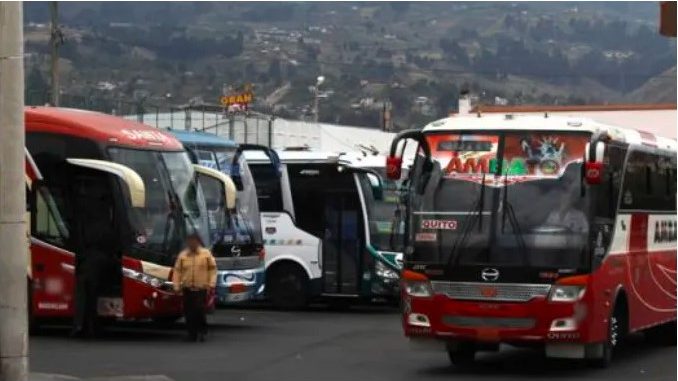
The National Transit Agency approved the operation of 752 frequencies in the capital, 512 will depart from Quitumbe, while 240 from Carcelén.
This Wednesday, September 2, 2020, the Quito Metropolitan Emergency Operations Committee authorized the reopening of the interprovincial land terminals of Quitumbe, south of the city, and Carcelén, north of the Capital.
The terminals will receive, starting this Wednesday, more than 12,000 passengers a day, after almost 6 months of inactivity. The Metropolitan Public Mobility and Public Works Company (Epmmop) announced intensive biosecurity controls for passengers, workers and transport personnel.
Users who want to enter the capital’s terminals will have to wear their mask as well as arriving or entering carriers and passengers. In addition, they must respect the social distancing of 2 meters.
In the Quitumbe and Carcelén terminals there are thermal cameras that will measure the temperature of the users, in addition, there are gel and alcohol dispensers with their respective signage.
The Secretary of Health of the Municipality of Quito communicated that it will carry out random tests of covid-19, to all users who move inside the terminals.
On the other hand, the National Transit Agency (ANT) authorized the operation of 752 frequencies in the capital, 512 will depart from Quitumbre, while 240 will do so from Carcelén. Frequencies are the number of trips that a cooperative makes on an authorized route.
The metropolitan COE authorized trips with 75% of bus capacity, so each transport unit will have to mobilize with an approximate of 33 passengers, before the pandemic the number of passengers amounted to 45.
Interprovincial trips can only be made between yellow and green traffic light cantons. The increase in passengers and frequencies will depend on a fortnightly analysis, which explains the rates of the epidemiological situation, the application of biosecurity protocols and the crowds inside and outside the terminals.
Carriers and passengers must also comply with other measures such as keeping transport units ventilated and disinfecting them every 3 hours; users should not eat inside the bus and only will not use their mask when hydrating; The entry of street vendors is prohibited and people traveling with pets must use special baskets for their transportation.

Be the first to comment